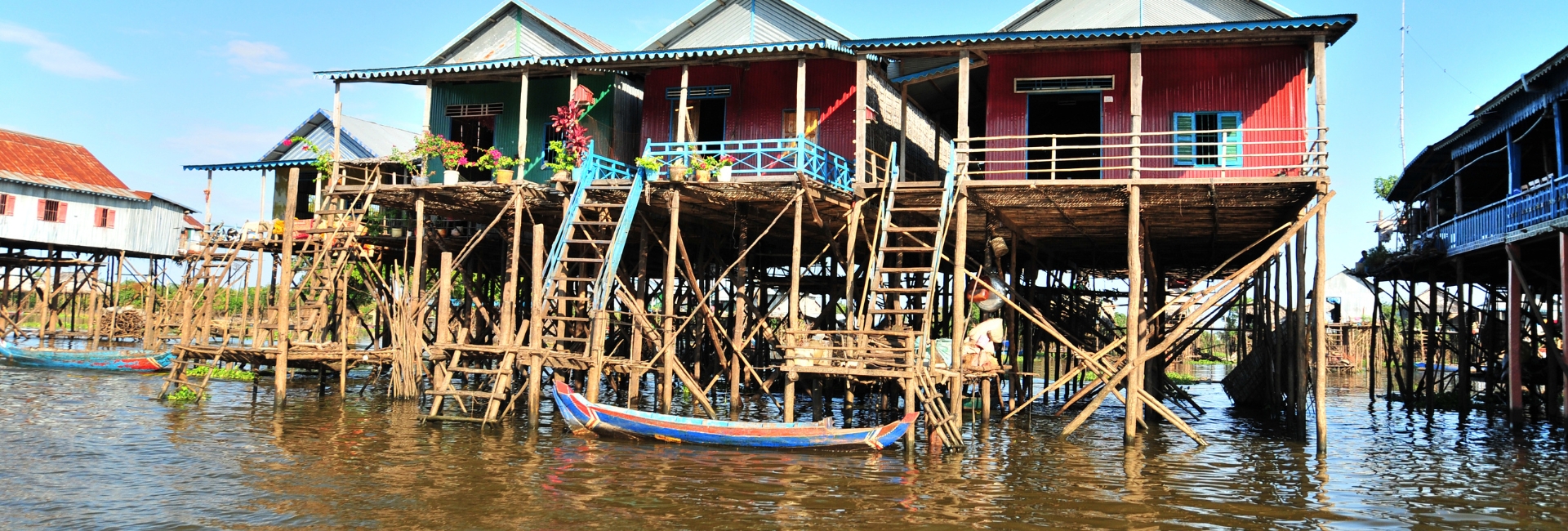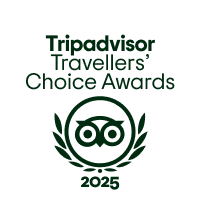Tonle Sap Lake, a lake that breathes with the rhythm of seasons, expands and contracts like a living organism, and sustains an entire ecosystem and culture. Let’s hop on this journey with Indochina Voyages to explore why this extraordinary freshwater marvel is often called the “heart of Cambodia.”
Where is Tonle Sap Lake Located?
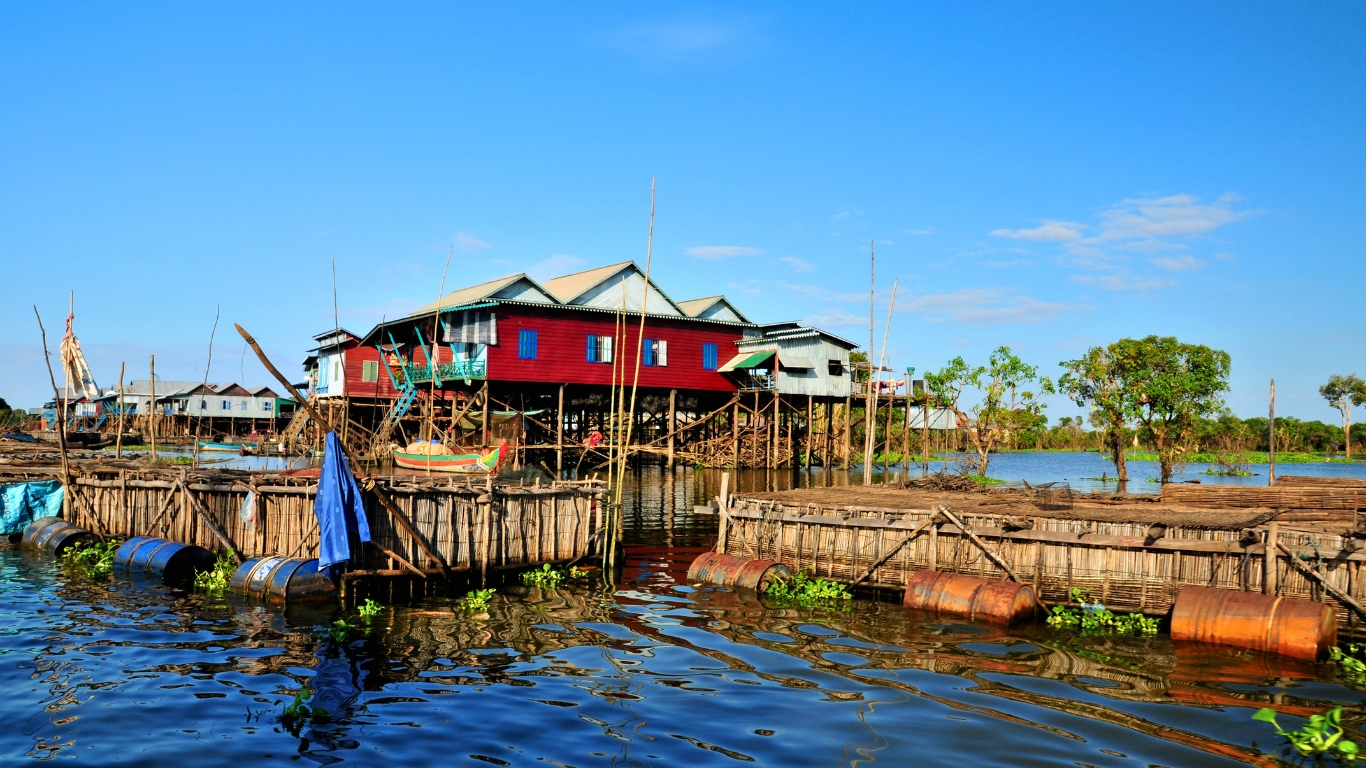
Nestled in the northwest of Cambodia’s lower Mekong plain, Tonle Sap Lake is a geographical wonder that defies conventional understanding of water bodies. The lake is strategically positioned within a unique geological context – formed by the collision of the Indian and Eurasian tectonic plates, creating a landscape that tells a story millions of years in the making.
What makes its location truly extraordinary is its remarkable hydrological system. Unlike most lakes, Tonle Sap’s water flow dramatically changes direction twice a year, creating a natural phenomenon that has shaped the lives of millions. During the dry season (November to March), the lake covers approximately 2,500-3,000 square kilometers. However, when the monsoon rains arrive (May to October), something magical happens.
The Mekong River’s water level rises, forcing the Tonle Sap River to reverse its flow. This incredible reversal causes the lake to expand to an astonishing 16,000 square kilometers – essentially growing to five times its original size. This natural expansion floods surrounding forests and plains, creating a unique ecosystem that supports an incredible diversity of life.
How Big is Tonle Sap Lake?
The size of Tonle Sap Lake is nothing short of extraordinary. In the dry season, it covers approximately 2,500-3,000 square kilometers with a shallow depth of around 1 meter. During the rainy season, it dramatically transforms, expanding to 16,000 square kilometers and reaching depths of 9-14 meters.
This dramatic size variation supports an incredibly rich biodiversity. The lake is home to:
- 149 fish species
- 11 globally endangered fish species
- 6 near-threatened bird species
- Numerous reptiles, including the endangered Siamese crocodile
- The famous Mekong giant catfish (one of the world’s largest freshwater fish)
Some remarkable wildlife inhabitants include:
- Bengal and black-bellied fish eagles
- Spotted-billed pelicans
- Milky storks
- Black-headed ibis
- Various freshwater snake species
Why is Tonle Sap Lake Important for Cambodia?
Tonle Sap is far more than just a lake – it’s the lifeline of Cambodia. Its importance cannot be overstated, touching virtually every aspect of Cambodian life.
What are the benefits of the Tonle Sap Lake?
- Economic Backbone: Provides 60% of Cambodia’s annual freshwater fish catch, contributing approximately 16% to the national GDP
- Food Security: Supplies over 60% of the country’s protein intake through fishing
- Natural Flood Control: Regulates floods in the lower Mekong region during rainy seasons
- Biodiversity Preservation: A UNESCO Biosphere Reserve since 1997, hosting incredibly diverse ecosystems
- Agricultural Support: The seasonal flooding creates rich, fertile land for agricultural activities
- Cultural Significance: Supports unique floating communities and traditional ways of life
Tonle Sap Lake Floating Villages
The floating villages of Tonle Sap represent one of the most fascinating human adaptations to a dynamic environment. These communities have developed ingenious ways to live in harmony with the lake’s seasonal changes.
In Dry Season (Low water season)
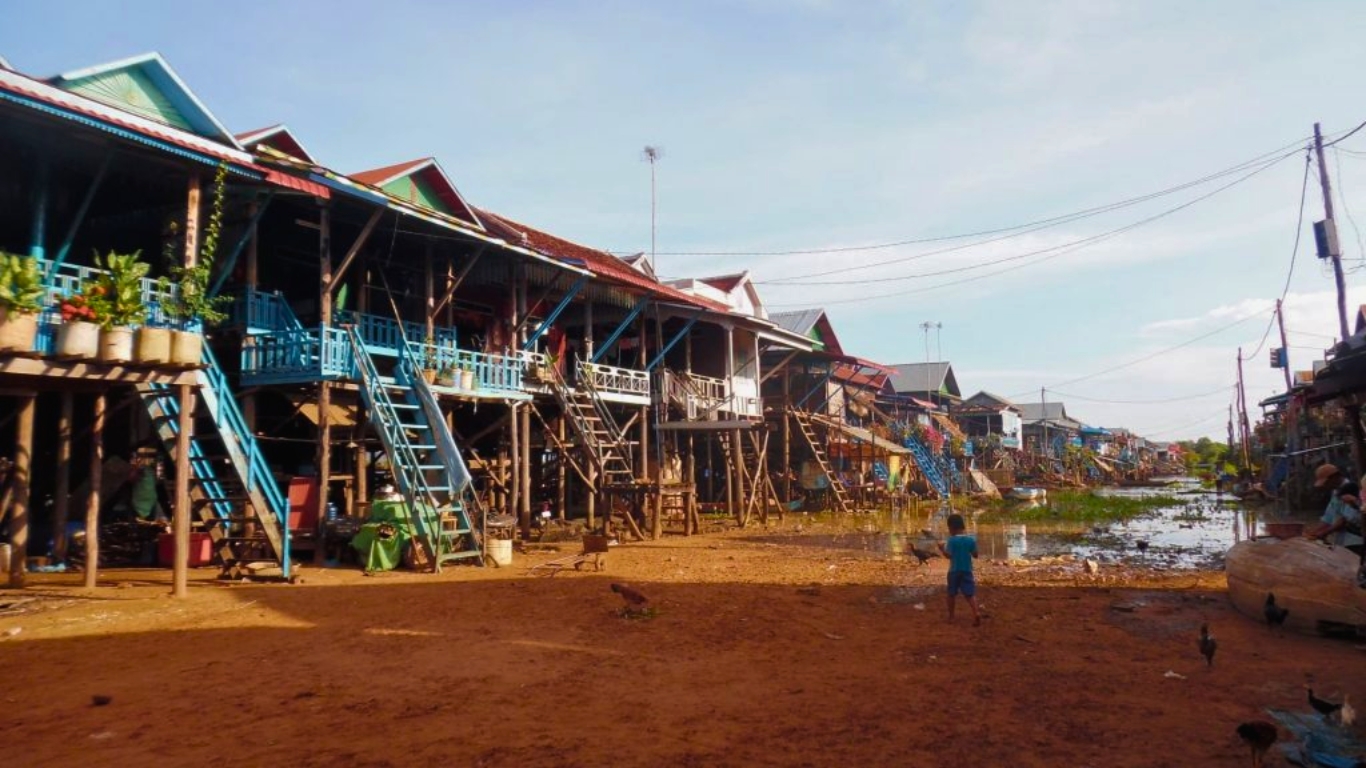
During the dry months, the villages become more compact. Houses on tall stilts become accessible via long ladders. Fishing activities are more concentrated, and community life revolves around preparing for the upcoming flood season. Visitors can explore:
- Traditional fishing techniques
- Pottery workshops in Kampong Chhnang
- Silversmith villages in Koh Chen
- Birdwatching in Prek Toal
In Rain Season (High water season)
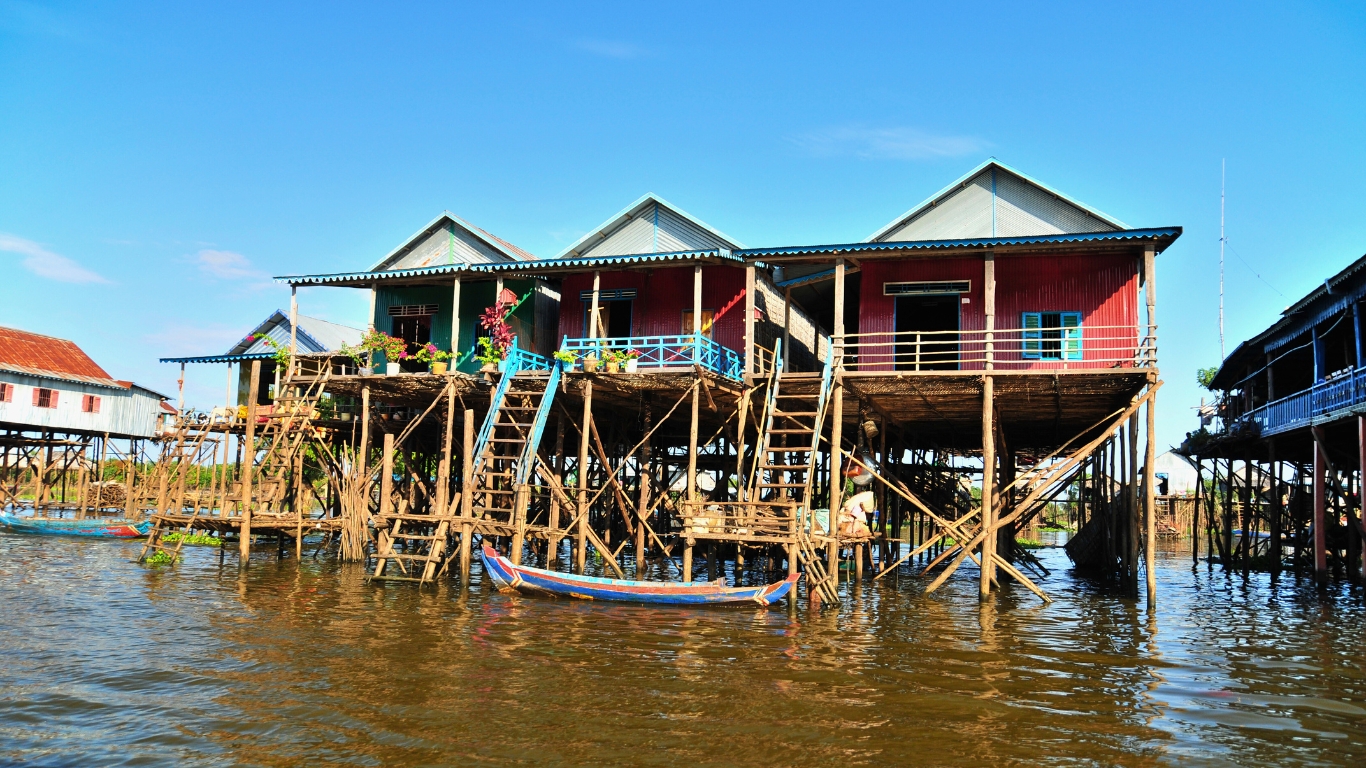
As waters rise, the landscape transforms. Floating houses become mobile, moving with the water’s flow. The ecosystem becomes incredibly vibrant:
- Flooded forests provide breeding grounds for fish
- Bird populations increase dramatically
- Fishing communities adapt their entire lifestyle
- More extensive boat tours become possible
How to Get to Tonle Sap Lake from Siem Reap
Located just 15 kilometers south of Siem Reap, to get to Tonle Sap lake from Siem Reap is easily accessible through various means. Here is the table of transportation available to get to the lake from Siem Reap:
| Transportation | Cost | Travel time | Pros | Cons | Best for | Recommended season |
| Boat tours | $15-$35 per person | 2-4 hours | – Authentic lake experience – Guided exploration – Close village views – Professional guide | Can be weather-dependent – Limited personal flexibility – Potential crowded tours | Nature enthusiasts – Photography lovers – Cultural explorers | Dry Season (Nov-Mar) |
| Tuk-tuk | $10-$15 round trip | 30-45 minutes | Most affordable – Flexible routing – Scenic countryside views – Local experience | Less comfortable – Limited lake access – Weather exposure – Rough roads | Budget travelers – Solo adventurers – Short on time | Year-round |
| Organize tour packages | $30-$75 per person | 4-6 hours | All-inclusive – Professional guides – Multiple village stops – Transportation included | More expensive – Fixed itinerary – Less personal freedom | First-time visitors – Families – Those wanting comprehensive experience | Dry Season (Nov-Mar) |
| Private car/ taxi | $20-$40 one way | 25-35 minutes | Maximum comfort – Private transportation – Flexible timing – Air-conditioned | Most expensive option – Less immersive experience – Limited interaction | Larger groups – Comfort seekers – Families with children | Year-round |
Extra tips for getting from Siem Reap to Tonle Sap Lake:
Key Considerations
- Seasonal Variations: Water levels significantly impact accessibility
- Booking Recommendation: Always book through reputable agencies
- Essential Preparations:
- Bring water
- Sun protection
- Light, comfortable clothing
- Cash for local purchases
Best Practices
- Confirm exact pickup and drop-off details
- Negotiate and clarify prices beforehand
- Check recent tour operator reviews
- Verify guide’s language proficiency
What to Expect
- Basic facilities in floating villages
- Potential additional entrance or boat fees
- Varying comfort levels depending on transportation method
Recommended Booking Channels
- Hotel concierge services
- Local travel agencies in Siem Reap
- Online booking platforms
- Trusted tour operator websites
Pro Tip: Combine transportation methods for a more comprehensive experience. For instance, take a tuk-tuk to the boat departure point and then enjoy a boat tour of the lake.
>> Read more: 15 Things to do in Siem Reap – Beside visiting Angkor Wat
Travel Tips and Recommendations
- Best time to visit: November to March (dry season) for easier navigation
- Nearest major city: Siem Reap (about 15 km away)
- Transportation: Boat tours from Siem Reap or Phnom Penh
- Recommended villages to visit: Kampong Chhnang, Koh Chen, Prek Toal
- Bring: Comfortable clothing, sun protection, water, and a sense of wonder
Tonle Sap Lake is more than a destination – it’s a living testament to nature’s complexity and human adaptability. Whether you’re a nature lover, cultural enthusiast, or adventure seeker, this extraordinary lake offers an unparalleled experience that will forever change your understanding of ecosystems and human resilience.
As climate change and development pose increasing challenges, visiting Tonle Sap is not just a travel experience, but a chance to witness and appreciate one of the world’s most unique natural environments.
Thuy Dang – From Indochina Voyages Team

